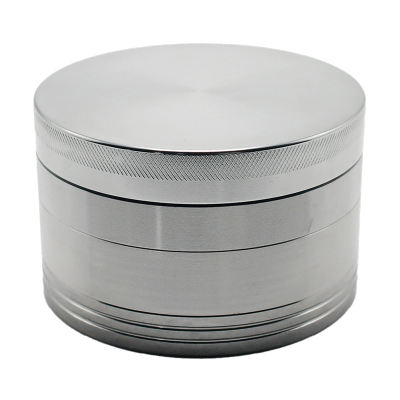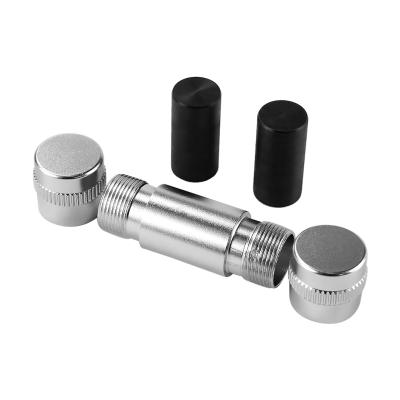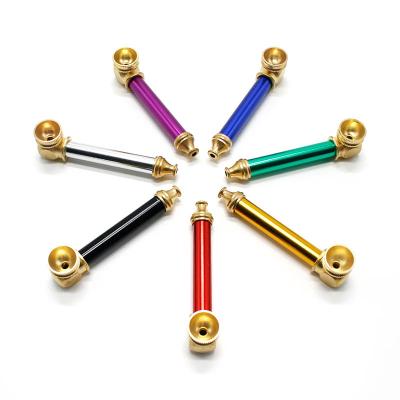Enhance Your Cannabis Grinding: Choosing the Perfect Weed Grinder Material
The art of grinding cannabis is an essential part of the modern smoking experience. Though it may seem trivial, the choice of weed grinder material plays a significant role in performance and efficiency when it comes to the finer details of cannabis preparation. By understanding how different materials affect grinding mechanics, enthusiasts can enhance their smoking rituals and achieve optimal consistency for burning or vaporizing cannabis. This article will delve into various materials used in weed grinders, highlighting advantages and drawbacks, with a particular focus on metal and plastic options, helping you make informed decisions.
Metal Grinders: Efficiency and Longevity
Metal grinders are renowned for their durability and performance. Often crafted from robust materials, they are less likely to wear down over time compared to plastic alternatives. The choice of metal greatly influences the overall grinding experience, ensuring a seamless process that results in evenly shredded cannabis.
Types of Metals Used in Grinders
Aluminum
Aluminum is a popular material for weed grinders, known for its lightweight nature and high level of durability. Users often appreciate aluminum grinders for their effortless grinding capabilities, equipped with sharp, well-engineered teeth that guarantee a fine and consistent grind. Moreover, aluminum is corrosion-resistant, ensuring longevity and reliable performance.
CSP GRN13362
CSP's GRN13362 model is engineered specifically for the cannabis connoisseur, providing strength and efficiency. Crafted from aluminum alloy, this grinder features advanced design elements that enhance functionality. With precision-cut teeth, the GRN13362 enables users to shred cannabis effortlessly, resulting in a more uniform consistency that is ideal for smoking or vaporizing. The sleek design and robust construction contribute to its position as a sought-after addition to any cannabis enthusiast's toolkit.

Stainless Steel
Stainless steel grinders offer a premium alternative while providing the added benefits of rust resistance and easy cleaning. The robust build ensures that the grinder can withstand wear and maintain sharpness over time. This reliability enhances the overall performance, making them a favored choice among more discerning users.
Benefits of Metal Grinders
Metal grinders excel in efficiency, capable of turning cannabis into a finely ground product quickly and with minimal effort. Their sturdy construction ensures longevity, standing up to frequent use without compromising performance. Additionally, metal grinders tend to be aesthetically pleasing, often featuring polished surfaces that add a touch of elegance to any smoking setup. The durability of metal grinders also allows them to come equipped with multiple compartments for easy storage of ground herbs, enhancing user convenience.
Drawbacks of Metal Grinders
Despite their advantages, metal grinders can sometimes be on the pricier side. Additionally, some users find that the weight of a metal grinder can make it less portable compared to lighter alternatives. Furthermore, metal grinders can retain odors if not cleaned properly, which may affect the freshness of your cannabis. It is vital for users to commit to regular cleaning to avoid this issue.
Plastic Grinders: Affordable and Accessible
Plastic grinders present an economical choice for individuals new to the cannabis scene or those who seek a lightweight alternative. These grinders are often favored for their affordability and simplistic design, making them accessible options for a broad audience.
Common Plastics Used in Weed Grinders
Acrylic
Acrylic grinders are prevalent due to their low cost and lightweight. They are available in a variety of colors and appearances, allowing users to personalize their choices. However, acrylic can be less durable than metal, leading to potential wear over time.
Polycarbonate
Polycarbonate is another plastic widely used in weed grinders, recognized for its durability and impact resistance. These grinders are stronger than typical acrylic models and can withstand significant usage, although they still do not match the longevity inherent in metal options.
CSP GRP21005
CSP's GRP21005 model highlights the brand’s commitment to creating quality solutions in the plastic grinder market. Made from high-grade polycarbonate, this grinder is designed for efficiency, sporting sharp teeth that yield a consistent grind. The GRP21005 is light and easy to handle, making it an ideal choice for users looking for a portable, user-friendly option. Its vibrant design and affordable pricing make it an attractive choice for cannabis enthusiasts, without compromising on grinding efficiency.
Advantages of Plastic Grinders
Plastic grinders are typically more budget-friendly than their metal counterparts, enabling consumers to enter the cannabis grinding scene without a significant financial commitment. Their lightweight nature makes them extremely portable, perfect for those on the go. Additionally, plastic grinders often come in an array of colors and designs, enabling users to express their personality through their accessories.
Limitations of Plastic Grinders
However, plastic grinders are not without their drawbacks. Their construction generally lacks the durability of metal grinders, making them more vulnerable to wear and tear. Many users have reported that plastic teeth may become dull over time, negatively impacting grinding efficiency. Furthermore, the grinding consistency may not compare to that of metal grinders, potentially resulting in a less enjoyable smoking experience.
In conclusion, the material of a weed grinder plays a crucial role in determining its effectiveness and suitability for personal preferences. Metal grinders, like those from CSP including GRN13362, provide durability and efficient performance, while plastic options such as the CSP GRP21005 offer affordability and lightweight convenience. Ultimately, understanding the unique benefits and limitations of each material will enhance your cannabis grinding experience, allowing you to choose the perfect tool for your needs.
Wooden Grinders: Aesthetic and Natural Feel
Wooden grinders offer a unique aesthetic appeal and a connection to nature that many users appreciate. Their organic look and feel can enhance the overall experience of grinding cannabis, making it a more enjoyable and tactile process. Moreover, wood is a natural material that promotes sustainability, particularly when sourced responsibly. While they may not match the performance of metal grinders, their rustic charm makes them a staple for certain enthusiasts.
Popular Wood Types for Grinders
Maple
Maple is a popular choice for wooden grinders due to its durability and attractive grain patterns. The wood is harvested from sustainable sources, making it an environmentally friendly option. Maple wood grinders can withstand wear over time while maintaining their appearance. Furthermore, their natural finish can enhance the overall aesthetic appeal, often complimenting other smoking accessories.
Rosewood
Rosewood is known for its rich color and fragrance, providing not just a functional tool but also an ornament. The dense composition of rosewood helps to create a sturdy grinder that resists damage compared to softer woods. Its striking appearance can attract attention, making it a favorite among collectors. However, users should be aware of the need for proper care to maintain its beauty and functionality.
CSP GRN21044
CSP’s GRN21044 model exemplifies the craftsmanship that can be achieved with wooden grinders. Constructed from sustainably sourced wood, this grinder combines aesthetic appeal with functionality. The GRN21044 features a smooth grinding action due to its finely crafted teeth and internal design. It serves as an excellent alternative for those looking to add a hint of nature to their cannabis preparation rituals.

Advantages of Wooden Grinders
Wooden grinders present numerous advantages that can appeal to various users. Their natural composition is less likely to affect the flavor profile of the ground cannabis, allowing for a purer smoking experience. Additionally, the tactile nature of wood can make the grinding process feel more personal and engaging. They are often lighter than metal options, promoting portability, and their unique designs can make them visually pleasing accessories.
Disadvantages of Wooden Grinders
Despite their advantages, wooden grinders have some limitations that should be taken into account. One primary concern is their durability; they can be more prone to damage and wear compared to metal options. Over time, the grinding surfaces may become less effective due to dulling. Furthermore, wooden grinders are often more challenging to clean properly, as resin can build in the grain of the wood, potentially affecting the flavor of the cannabis.
Comparing Performance Across Different Materials
When assessing the performance across different grinder materials, several key factors come into play. Users must consider durability and wear resistance, ease of cleaning and maintenance, grinding accuracy and fineness, and environmental impact and sustainability. Each aspect influences the overall functionality and suitability of the weed grinder for personal preferences.
Durability and Wear Resistance
In terms of durability, metal grinders generally outperform wooden and plastic options. They are constructed from robust materials like aluminum and stainless steel, making them resistant to physical damage and corrosion. Comparatively, wooden grinders may suffer from wear and tear, while plastic grinders can become brittle over time. Users seeking longevity should prioritize metal versions, whereas those favoring aesthetics may lean towards wood.
Ease of Cleaning and Maintenance
Cleaning a grinder regularly is crucial for maintaining its performance and ensuring that each batch of cannabis is fresh. Metal grinders have a clear advantage in this area; their non-porous surfaces allow for thorough cleaning with minimal effort. Plastic grinders may also offer ease of cleaning, but the materials can scratch and wear down over time. In contrast, wooden grinders can require special care due to their organic nature, making them more susceptible to odors and resin buildup.
Grinding Accuracy and Fineness
The accuracy and fineness of the grind may vary significantly based on the material used. Metal grinders excel in producing a consistent and finely ground product, as their sharp, well-engineered teeth are designed with precision. Wooden grinders may not always provide the same level of grind texture; however, they can still deliver satisfactory results for many users. Plastic grinders may lack sharpness and design features, leading to inconsistent grinding.
Environmental Impact and Sustainability
The environmental impact is an important consideration when selecting a weed grinder. Wood grinders can be an eco-friendly choice when sourced sustainably, contributing to a reduction in the carbon footprint. Metal grinders, particularly those made from recycled materials, also promote sustainability. In contrast, plastic grinders, while affordable, can have a greater environmental toll due to their reliance on petroleum products and the fact that plastics are more difficult to recycle.
In conclusion, understanding the implications of grinder material on performance allows cannabis enthusiasts to select the ideal weed grinder tailored to their needs. Whether choosing a metal grinder for its durability and efficiency, a plastic option for its affordability, or a wooden grinder for its aesthetic charm, each type provides unique benefits and challenges that cater to different preferences. By recognizing these differences, users can enhance their cannabis grinding experience significantly.
Conclusion
In summary, the choice of material when selecting a weed grinder can greatly impact your overall experience. Metal grinders, such as CSP's GRN13362, offer durability and efficiency, while plastic options like the GRP21005 provide affordability and convenience. Meanwhile, wooden grinders, such as the GRN21044, present a unique aesthetic that appeals to specific users. By weighing the pros and cons of each material, you can enhance your cannabis grinding process to fit your personal preferences and needs.



